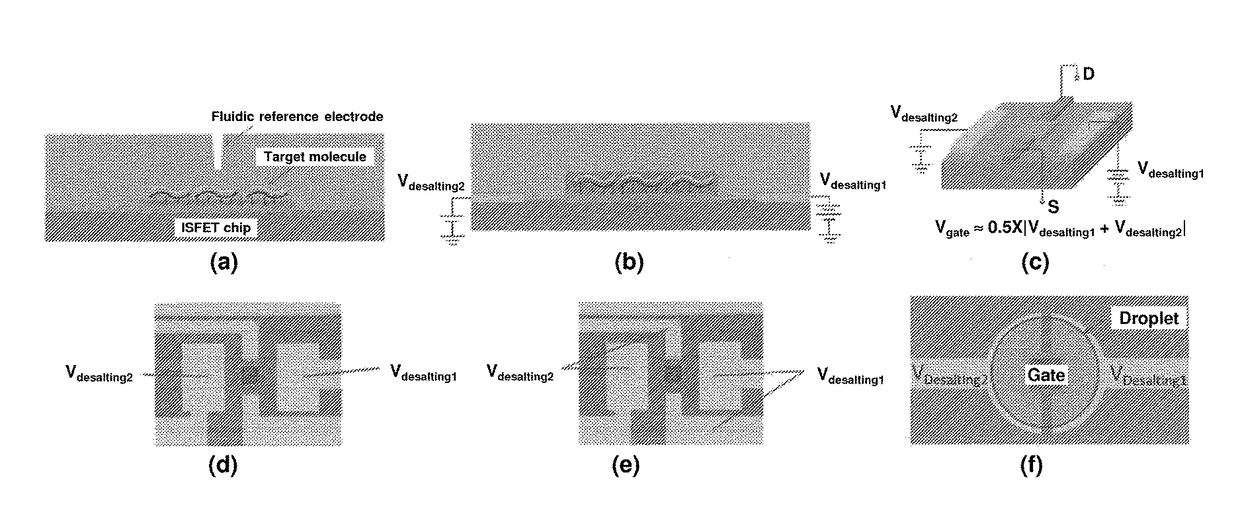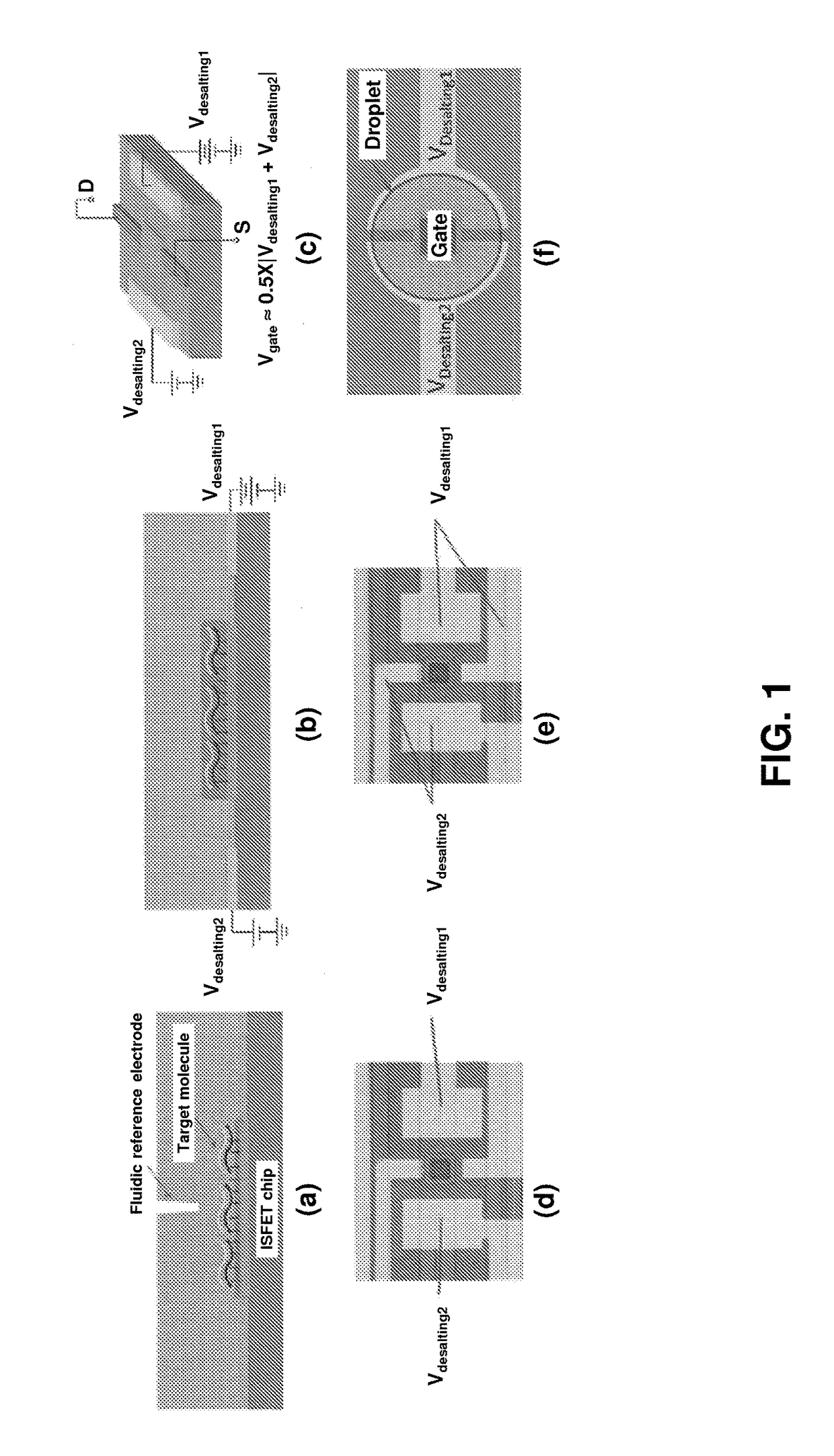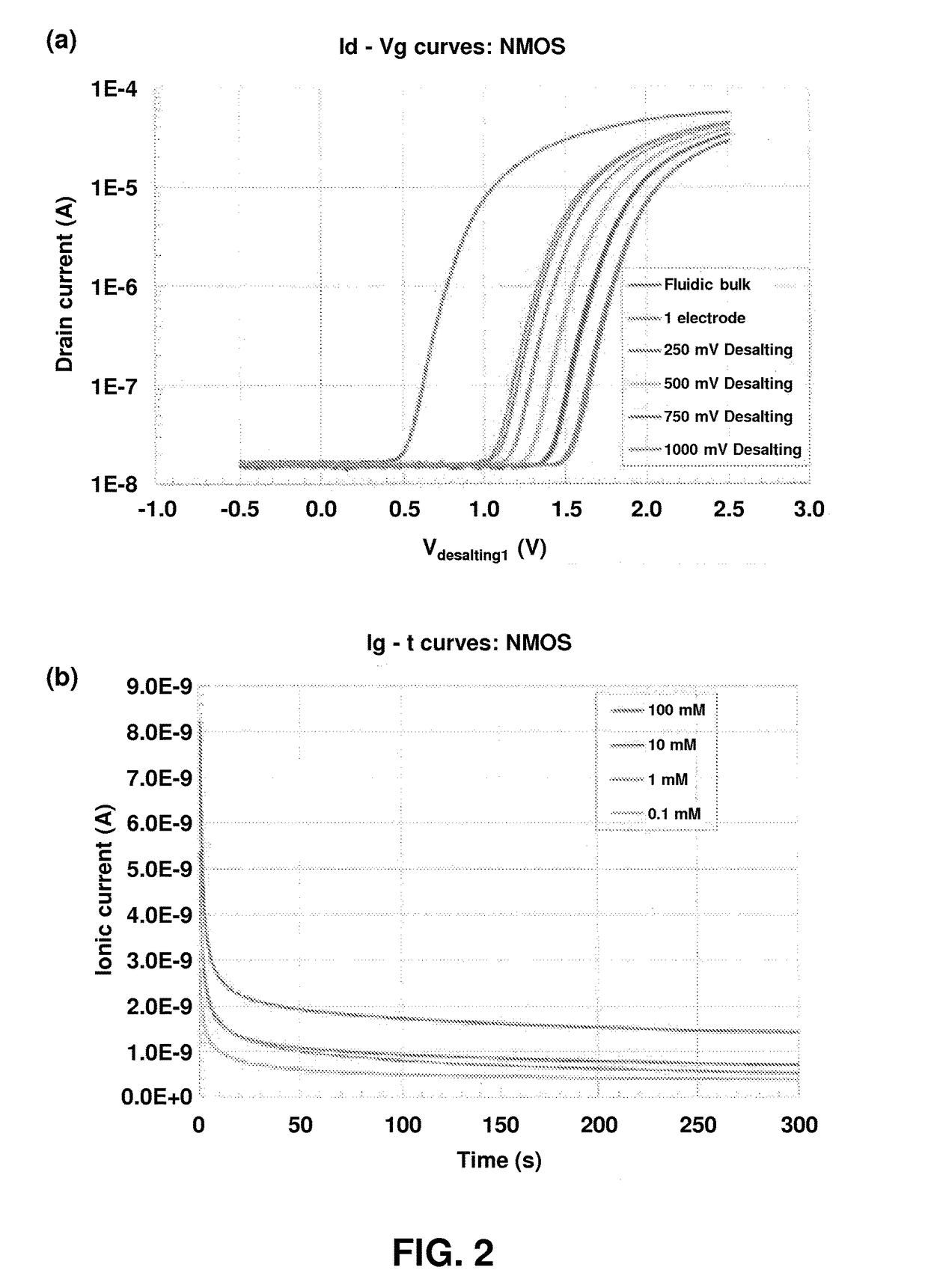Label Free Analyte Detection by Electronic Desalting and Field Effect Transistors
a field effect transistor and label detection technology, applied in the field of label free sensing, can solve the problems of sample preparation, certain limitations of fet sensing, and the common disadvantage of conventional sensing systems, and achieve the effects of improving sensor response and detection characteristics, facilitating label free analyte sensing, and high ionic strength
- Summary
- Abstract
- Description
- Claims
- Application Information
AI Technical Summary
Benefits of technology
Problems solved by technology
Method used
Image
Examples
example 1
References for Example 1
[0148]1. P. Bergveld, “Thirty years of ISFETOLOGY, What happened in the past 30 years and what may happen in the next 30 years,”Sensors and Actuators B: Chemical 88 (2003): 1-20.[0149]2. P. Bergveld, “The development and application of FET-based biosensors.”Biosensors 2(1) (1986): 15-33.[0150]3. A. van den Berg et al., “A micro-volume open liquid-junction reference electrode for pH-ISFETs.”Sensors and Actuators B: Chemical 1 (1990): 425-432.[0151]4. J. M. Rothberg et al., “An integrated semiconductor device enabling non-optical genome sequencing,”Nature, 475 (2011): 348-352.[0152]5. W. Guan et al., “Field-effect reconfigurable nanofluidic ionic diodes,”Nature Communications, 2 (2011): 506.[0153]6. B. R. Dorvel et al., “Fabrication of High-k Hafnium Oxide Based Silicon Nanowires for Sensitive Detection of Small Nucleic Acid Oligomers,”ACS Nano, 6(7) (2012): 6150-6164.[0154]7. J. Go et al., “Coupled Heterogeneous ‘Nanowire-Nanoplate’ Planar Transistor Sensors f...
example 2
ization of NanoFETs with on-Chip Platinum Electrodes
[0159]NanoFETs and on-chip platinum electrodes are examined to further explore and characterize device and biasing schematics. Dye visualization is employed to examine desalting around the devices, including MQAE (Cl−) and SNARF-5F (pH) dyes (see FIG. 5). Further explored are multiple pairs of reference electrodes that surround the FET. To characterize biasing conditions, one electrode is swept while the second electrode of the pair is grounded; and both reference electrodes are swept with an offset. The biasing experiments indicate a fixed desalting voltage with respect to the gate voltage is more stable. This can eliminate interference associated with FET on / off behavior and also eliminates Faradaic overpotential when at large gate voltages.
[0160]Referring to FIG. 5, dyes are attached to aminosilanized surface using EDC-NHS leaving group chemistry. Ester hydrolysis to carboxylic acid preserves fluorophores for MQAE dye. FIG. 3B s...
example 3
ectrodes Around Gate
[0166]FIGS. 17-18 illustrate an increase in metal electrode surface area by more than a factor of 2 to capture more ions. Furthermore, this configuration helps anchor the droplet by wetting of the metal surface around the FET sensor gate. FIGS. 17-18 show a substrate 100, such as a chip, supporting a FET 200, including FET sensor 210, source 230, drain 240, and patterned reference electrodes 310 and 320. Sensor 210 is illustrated as a nanowire with corresponding sensor area 220. Reference electrodes 310 and 320 are paired and opposibly face each other separated by a separation distance 330. Electrical controllers 410 and 420 are electrically connected to reference electrodes. Fluid sample is positioned within a well 500 so as to substantially cover the working surface area of reference electrodes 310 and 320 (e.g., the semi-circular shaped portion). Electrical sensor 600 and / or 610 are connected to the FET to monitor an electrical parameter, wherein a change in t...
PUM
| Property | Measurement | Unit |
|---|---|---|
| Debye screening length | aaaaa | aaaaa |
| Debye screening length | aaaaa | aaaaa |
| ionic strength | aaaaa | aaaaa |
Abstract
Description
Claims
Application Information
 Login to View More
Login to View More - R&D
- Intellectual Property
- Life Sciences
- Materials
- Tech Scout
- Unparalleled Data Quality
- Higher Quality Content
- 60% Fewer Hallucinations
Browse by: Latest US Patents, China's latest patents, Technical Efficacy Thesaurus, Application Domain, Technology Topic, Popular Technical Reports.
© 2025 PatSnap. All rights reserved.Legal|Privacy policy|Modern Slavery Act Transparency Statement|Sitemap|About US| Contact US: help@patsnap.com



